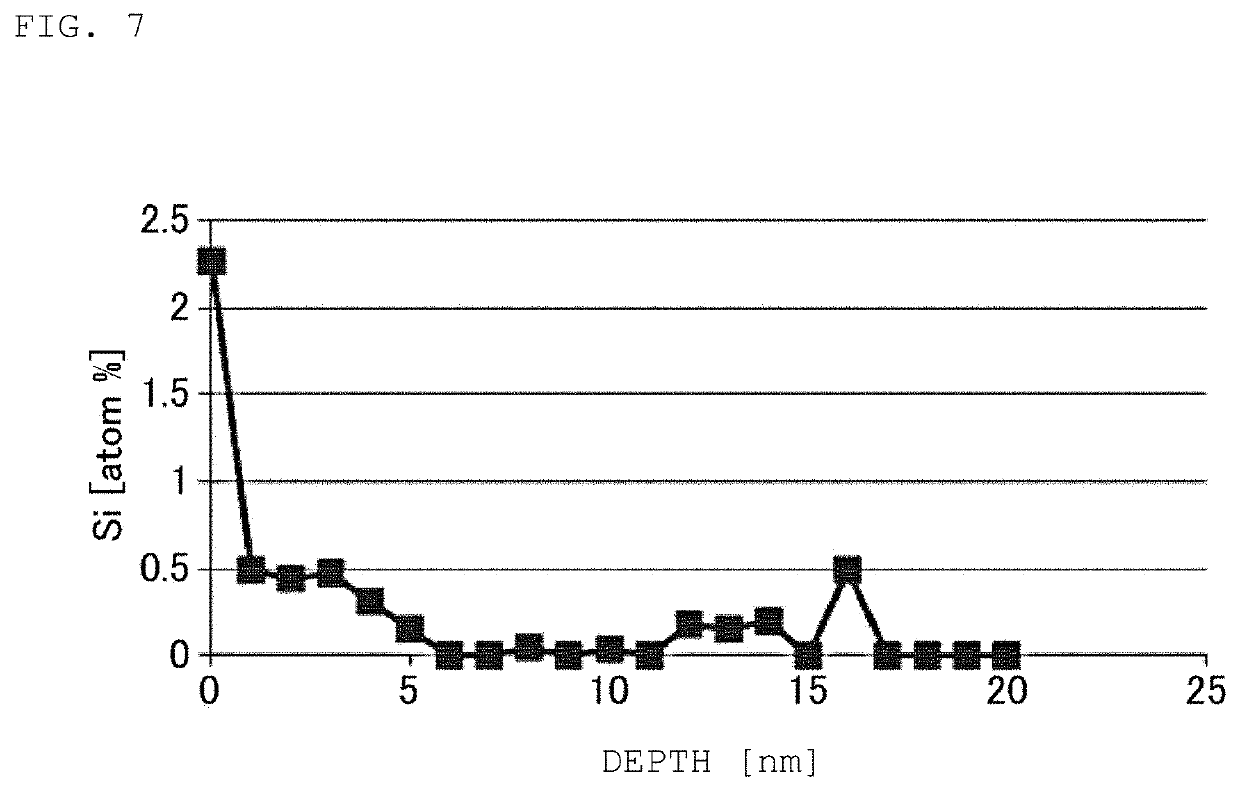Film capacitor, method of producing film capacitor, dielectric resin film, and method of producing dielectric resin film
a dielectric resin film and film capacitor technology, applied in the direction of wound capacitors, thin/thick film capacitors, fixed capacitor details, etc., can solve the problems of low friction, no known procedure to improve the low friction, and poor press performance depending on the resin film
- Summary
- Abstract
- Description
- Claims
- Application Information
AI Technical Summary
Benefits of technology
Problems solved by technology
Method used
Image
Examples
example 1
[0151][Production of Film Capacitor]
[0152]A phenoxy resin was prepared as a first organic material, and MDI (diphenylmethane diisocyanate) was prepared as a second organic material. A phenoxy resin, i.e., a high-molecular-weight bisphenol A-type epoxy resin having an epoxy group at a terminal, was used as the phenoxy resin. A mixture of 4,4′-diphenylmethane diisocyanate and a carbodiimide-modified product thereof (weight ratio 70:30) was used as the MDI.
[0153]A polyester-modified polydimethylsiloxane solution having a hydroxyl group (BYK370, manufactured by BYK Additives & Instruments, non-volatile content: 25%) was prepared as a silicone resin.
[0154]The first organic material, the second organic material, and the silicone resin were mixed at a predetermined weight ratio to obtain a resin solution. In order to obtain the resin solution, the phenoxy resin was dissolved in a mixed solvent of methyl ethyl ketone and toluene, a solution of MDI was added to the phenoxy resin solution, an...
example 2
[0163]A dielectric resin film was produced in the same manner as in Example 1 except that the polyester-modified polydimethylsiloxane solution having no hydroxyl group (BYK302, manufactured by BYK Additives & Instruments, non-volatile content: 95%) was used as the silicone resin, and thus a film capacitor was produced.
examples 3 to 11
[0168]Dielectric resin films were produced in the same manner as in Example 1 except that the additive amounts of the silicone resin were changed to the values shown in Table 2, and thus film capacitors were produced. The press performance of each of the film capacitors of Examples 3 to 11 was also evaluated in the same manner as described above. The results are shown in Table 2.
[0169]With respect to the film capacitors of Examples 1 and 3 to 11 and Comparative Example 1, the electrode peeling was evaluated by examining the adhesion between the first surface of the dielectric resin film and the first metal layer. The evaluation of electrode peeling was performed on the dielectric resin film before producing the film capacitor.
[0170]In the electrode peeling evaluation test, the adhesion of the vapor-deposited film was examined by adhering an adhesive test tape to the vapor-deposited surface and rapidly and forcefully peeling the tape. An adhesive tape having a width of 12 to 19 mm (a...
PUM
| Property | Measurement | Unit |
|---|---|---|
| surface energy | aaaaa | aaaaa |
| surface energy | aaaaa | aaaaa |
| surface energy | aaaaa | aaaaa |
Abstract
Description
Claims
Application Information
 Login to View More
Login to View More - R&D
- Intellectual Property
- Life Sciences
- Materials
- Tech Scout
- Unparalleled Data Quality
- Higher Quality Content
- 60% Fewer Hallucinations
Browse by: Latest US Patents, China's latest patents, Technical Efficacy Thesaurus, Application Domain, Technology Topic, Popular Technical Reports.
© 2025 PatSnap. All rights reserved.Legal|Privacy policy|Modern Slavery Act Transparency Statement|Sitemap|About US| Contact US: help@patsnap.com



